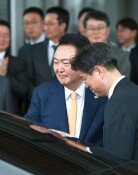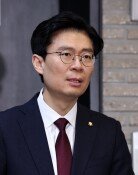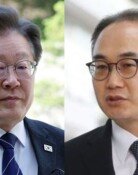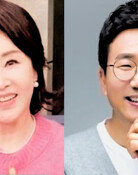Park Chung-hee and the miracle of KIST
Park Chung-hee and the miracle of KIST
Posted February. 05, 2016 09:10,
Updated February. 05, 2016 09:14
The main building of this place, which features the Korean style of architecture, was built by an architect named Kim Su-geun during the 1960s. In 1967, former U.S. Vice President Hubert Humphrey visited Seoul and was amazed by this place, which was a magnet for some of the smartest individuals who turned down the offers from rich countries with a better research environment and chose to stay in Korea. It was one of the few destinations that Neil Armstrong, the astronaut who walked on the moon for the very first time in 1971, chose to visit during his brief stay in Korea. The place in question is Korea Institute of Science and Technology (KIST), a research hub of Korea that laid the groundwork for the advancement of science and industry of the country.
On February 4, 1966, a U.S.-Korea signing ceremony was held for the foundation of KIST, the first research center of science and technology established in Korea. The U.S. provided 10 million dollars after Korea dispatched soldiers for the U.S. during the Vietnamese War, and the Korean government invested 10 million dollars. Since the foundation, KIST has served as the heart of the industrial advancement of Korea in the field of steel-making, ship-building, automobile, and semi-conductor, making critical contributions to realizing the Miracle of the Han River. Marking the 50th anniversary on Wednesday, KIST announced its vision for the next 50 years, and the new slogan was “KIST 2066, Beyond Miracle.”
Former President Park Chung-hee and KIST had an inseparable relationship. The former president, who founded the research institute, secured the forestry experiment station in Hongneung for KIST, in the face of the heavy opposition from the then Ministry of Agriculture and Forestry. He often visited the institute and encouraged the researchers who burned the midnight oil every day. The former president gave a strict order not to touch the budget allocated to KIST and made sure that the doctors recruited from overseas should get paid more than the president himself. This explains why Park Chung-hee is considered as the man who had the biggest passion about the advancement of science technology in Korea among its former presidents.
In 2012, some veterans from KIST planned to build a science hall in remembrance of the passion of the former president, but the plan was scraped due to political controversy. On Thursday, a time-capsule burying event was supposed to take place along with the unveiling ceremony of the former president’s statue, but the ceremony had to be postponed. Aside from the faults on the part of the former president, it needs to be remembered that the man had an ambitious dream for his future generation and made huge contributions to realizing it when even a single bag of wheat flour was hard to come by.
고미석기자 mskoh119@donga.com







